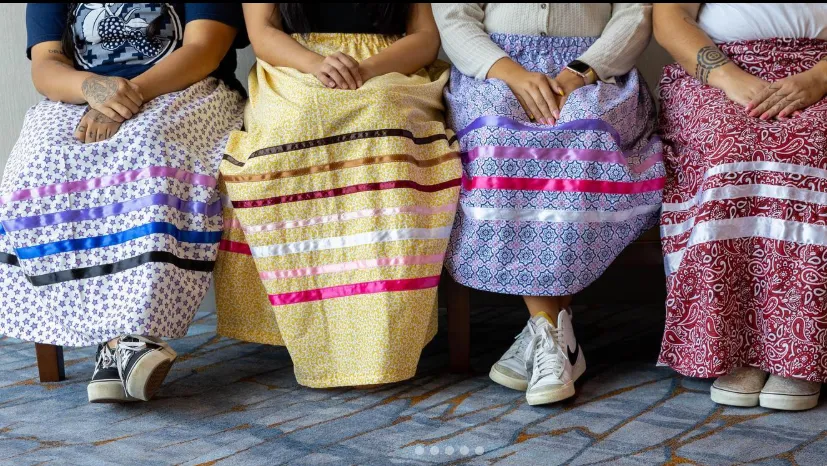
New The Cherokee Ribbon Skirt: Walking with Tradition Blog Post
The ribbon skirt is more than just a beautiful garment — it's a powerful statement of identity, resilience, and Cherokee womanhood. Worn by women across all three federally recognized Cherokee tribes — the Eastern Band of Cherokee Indians (EBCI), the Cherokee Nation, and the United Keetoowah Band — this skirt is a vibrant thread in the fabric of our culture.
A Living Symbol of Our Strength
Ribbon skirts are traditionally handmade, featuring rows of colorful ribbons sewn near the hem of a cotton or broadcloth skirt. But every skirt tells its own story. The colors and designs often reflect personal journeys, spiritual beliefs, family clans, or even causes like Missing and Murdered Indigenous Women (MMIW) — where red skirts have become a national symbol of remembrance and justice.
Though often considered traditional, the ribbon skirt actually represents a powerful act of cultural adaptation. In the 1800s, Cherokee and other Native women began incorporating trade cloth and European ribbons into their clothing, transforming what was imposed on them into a new expression of sovereignty and beauty.
Across the Tribes: Style and Spirit
While the ribbon skirt is beloved across all Cherokee communities, styles can vary by region:
EBCI skirts may reflect more earth-toned palettes and Appalachian influences, sometimes incorporating elements like quilting or finger weaving.
Cherokee Nation skirts are often more influenced by intertribal styles found in Oklahoma, with bold colors and symbolic patterns, especially during public ceremonies and MMIW events.
But no matter where it’s worn, each skirt is a visual declaration:
We are still here. We are still Cherokee.
Stomp Dances and Respect
You’ll often see ribbon skirts at stomp dances — a central part of Cherokee ceremonial and social life. The way the ribbons flow with the dance steps adds to the beauty of the event. However, it’s important to note that some stomp grounds have specific expectations for attire.
At more formal or sacred stomp dances, especially those held on traditional grounds:
Women are expected to wear long skirts, and modest clothing is emphasized.
Some grounds prefer simpler fabric skirts with muted colors, especially for those dancing near the fire.
As always, following the lead of elders and community members is a sign of respect.
For social dances or public cultural celebrations, brightly colored ribbon skirts are widely embraced and worn proudly by women of all ages.
More Than a Skirt
To wear a ribbon skirt is to walk with the ancestors. It’s to carry our stories — and stitch new ones into being. Whether it’s sewn by a grandmother, gifted at a coming-of-age ceremony, or worn for the first time at a protest or powwow, each skirt holds layers of meaning and unspoken strength.
As one elder says:
"When you wear your ribbon skirt, you're walking with those who came before you."
So whether it’s flowing beside the stomp dance fire or worn in quiet pride at a graduation, the ribbon skirt reminds us:
We are Cherokee. And we carry our traditions forward with every step.
